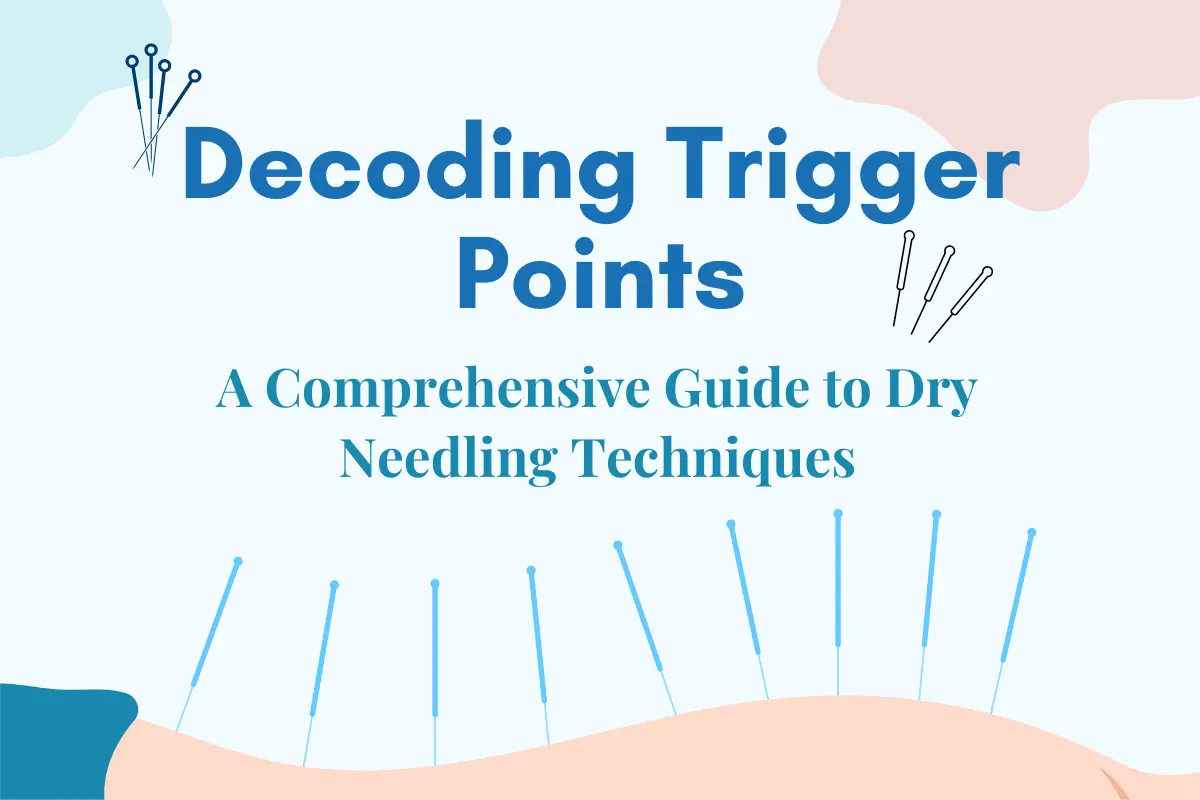
Introduction
In the realm of musculoskeletal therapy, trigger points are focal areas of muscle spasm and inflammation that can cause pain and discomfort. Addressing these trigger points has become a focal point in pain management, with Dry Needling emerging as a widely recognized technique. In this comprehensive guide, we will delve into the intricacies of trigger points, explore the techniques employed in Dry Needling, and touch upon the unique contributions of Dao Needle Therapy to this domain.
Understanding Trigger Points: Unraveling the Mysteries
Trigger points, often referred to as muscle knots, are localized areas of hyperirritability within a muscle. These points can cause pain, restricted movement, and even referred pain to other areas of the body. Understanding the anatomy of trigger points is crucial for effective intervention. Dry Needling, a technique derived from acupuncture principles, has gained prominence for its ability to target and release these problematic areas.
The Essence of Dry Needling: Techniques and Applications
Dry Needling involves the insertion of thin needles directly into trigger points, aiming to deactivate and relieve muscle tension. Let’s explore some key techniques employed in Dry Needling:
Piston Technique:
- Involves the swift insertion and withdrawal of the needle to stimulate the trigger point.
- Promotes a local twitch response, releasing tension in the muscle fibers.
Spreading Technique:
- Targets broader areas around the trigger point to address muscle groups.
- Effective for treating muscle imbalances and promoting overall muscle relaxation.
Tonic Technique:
- Involves leaving the needle in the trigger point for an extended period.
- Allows for sustained stimulation and relaxation of the muscle.
Non-Trigger Point Needling:
- Target areas away from the trigger point to address referred pain.
- Useful for managing pain conditions with complex pain referral patterns.
The Dao Needle Therapy Touch: A Holistic Perspective
In contrast to Dry Needling, which often focuses primarily on trigger points, Dao Needle Therapy offers a more holistic approach to pain management. Going beyond conventional techniques, Dao Needle Therapy incorporates biomechanical tests, patient positioning, and a comprehensive strategy for addressing chronic pain and postural imbalances. The specialized knife needle used in Dao Needle Therapy allows for precise targeting of both specific and broad areas of contracted and inert tissue, providing a nuanced and integrative
perspective on pain relief.
Looking Ahead: Integrating Dry Needling with Dao Needle Therapy
As we navigate the landscape of trigger point therapy, the integration of Dry Needling and Dao Needle Therapy offers a well-rounded approach. Dry Needling’s precision in targeting trigger points aligns seamlessly with Dao Needle Therapy’s broader perspective, providing a comprehensive solution for pain relief and postural correction.
Conclusion: Empowering Pain Relief Through Knowledge
Decoding trigger points and understanding the techniques employed in Dry Needling opens a gateway to effective pain management. While Dry Needling stands out for its targeted approach, Dao Needle Therapy brings an added dimension to the table with its holistic perspective. By combining the strengths of both modalities, practitioners can offer a more nuanced and personalized approach to individuals seeking relief from musculoskeletal pain.
For those intrigued by the world of trigger point therapy, Dao Needle Therapy courses by Brian Bowen provide an opportunity to delve deeper into this transformative field. Explore the courses at Daoneedle.com/courses and embark on a journey toward mastering these innovative techniques.
